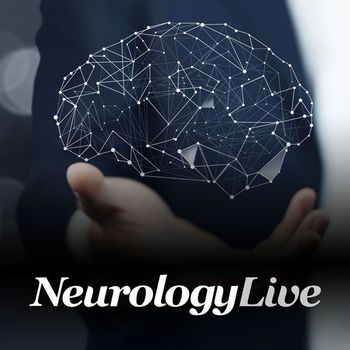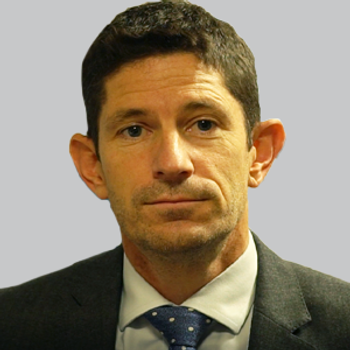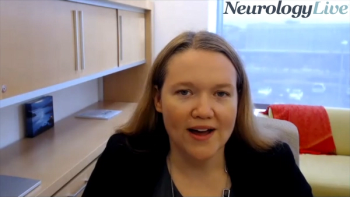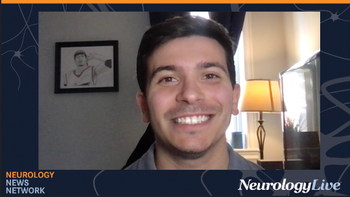
When each variable was entered into the first step of hierarchical linear regression analysis, perceived stress explained more than 40% of the variance in depressive symptoms, followed by felt stigma, at about 20%.

When each variable was entered into the first step of hierarchical linear regression analysis, perceived stress explained more than 40% of the variance in depressive symptoms, followed by felt stigma, at about 20%.

The assistant director of computational biology at Stanford University discussed where the Alzheimer disease community stands on gene therapies that target APOE, and whether missense variants will play a role. [WATCH TIME: 4 minutes]

People with epilepsy were less involved than controls in activities considered risky, such as driving and doing household chores, which may have suggested reduced social independence and legal limitations for driving.

Valine at position 11, the most significantly associated amino acid, was found in 26% of controls and 22% of individuals with Parkinson disease.

The professor of psychiatry and cell biology at NYU Langone discussed how validation of lysosomal autophagy will only simplify the understanding of the root causes of Alzheimer disease. [WATCH TIME: 4 minutes]

Investigators identified increased levels of neurofilament light that corresponded significantly with patients’ diabetic status, even after adjustment for age, BMI, and vascular risk factors.

The director of the Women’s Alzheimer’s Movement Prevention Center at Cleveland Clinic provided insight on data presented at AAIC 2022 that evaluated the interaction effect of sex and diagnosis on functional connectivity in various cognitive stages. [WATCH TIME: 3 minutes]

The chair of the nephrology division at Mayo Clinic provided context on new findings on the risks of preeclampsia, a hypertensive disorder, and elevated levels of neuroinflammation and neurovascular damage.

After Reata Pharmaceuticals submitted an analysis from the MOXIe extension study of the investigational agent as part of the NDA submission, the FDA extended the PDUFA date to February 2023.

The coauthors of a study assessing costs associated with unused disease-modifying therapies shared their insight into the extended effects of unused treatments in MS. [WATCH TIME: 14 minutes]

In a phase 2 trial, pepinemab significantly improved metabolic activity as detected by FDG-PET in the majority of brain regions examined, as well as correlated with changes in cognition across both Huntington disease and Alzheimer disease.

The impact of retinal thinning was higher when using GCIPL rather than pRNFL thinning as it explained more of the variance in relapse remission.

The medical student at Nova Southeastern University provided insight on a new innovative tool called the Cognitive Stress Test that can help distinguish different cognitive states for older adults. [WATCH TIME: 6 minutes]

Increased posterior cingulate cortex activation to sad faces in the long-delay diagnostic group were associated with worse symptoms of depression, as expressed by Beck Depression Inventory scores.

Lawrence Newman, MD, offered his insight into the findings of a survey conducted by the American Headache Foundation that identified correlations between migraine and mental health conditions.

The professor of psychiatry and cell biology at NYU Langone pleaded his case for why the Alzheimer community should begin to turn to other drug development strategies, including the relatively young phenomenon of autophagy. [WATCH TIME: 3 minutes]

Here's some of what is coming soon to NeurologyLive® this week.

After recently receiving approval in Canada, AMX0035 looks to join the US market alongside riluzole and edaravone, the only FDA-approved therapeutics that slow disease progression in ALS.

The chief medical officer and cofounder of Linus Health provided insight on the outlook of acoustic measures and machine learning to further classify cognitive impairment. [WATCH TIME: 4 minutes]

Test your neurology knowledge with NeurologyLive®'s weekly quiz series, featuring questions on a variety of clinical and historical neurology topics. This week's topic is neuromyelitis optica spectrum disorder.

The medical director of the North Texas Institute of Neurology and Headache offered an overview of the State of the Science Summit that was held on July 21, 2022, with a variety of expert clinicians in MS care. [WATCH TIME: 3 minutes]

Jagan A. Pillai, MD, PhD, neurologist, Cleveland Clinic Lou Ruvo Center for Brain Health, discussed a recent study which found faster clinical progression in those with nonamnestic initial cognitive symptoms.

Neurology News Network for the week ending August 6, 2022. [WATCH TIME: 4 minutes]

Take 5 minutes to catch up on NeurologyLive®'s highlights from the week ending August 5, 2022.

The neurologist at the Corinne Goldsmith Dickinson Center for MS offered an overview of the State of the Science Summit that was held on June 30, 2022, with a variety of expert clinicians from Mount Sinai. [WATCH TIME: 7 minutes]

Effect modification by cognitive status and APOE genotype revealed greater effects of mild behavioral impairment with apathy in those who had normal cognition or in non-APOE ɛ4 groups.

The nephrologist at Mayo Clinic provided insight on new data showing elevated extracellular vesicles of neurovascular origin in women with a history of severe preeclampsia years after pregnancy. [WATCH TIME: 4 minutes]

The FDA expressed concerns about the limitations of the data included in the submission, and recommended that Acadia conduct an additional trial in AD psychosis with pimavanserin (Nuplazid).

In a cohort of patients with NMOSD, more severe depressive symptoms were associated with increased time-varying functional connectivity between the precuneus and temporal cortex.

The Alnylam Pharmaceuticals agent, already approved for the treatment of polyneuropathy in those with hATTR amyloidosis, has now shown promise as a therapeutic option for patients with ATTR amyloidosis with cardiomyopathy.